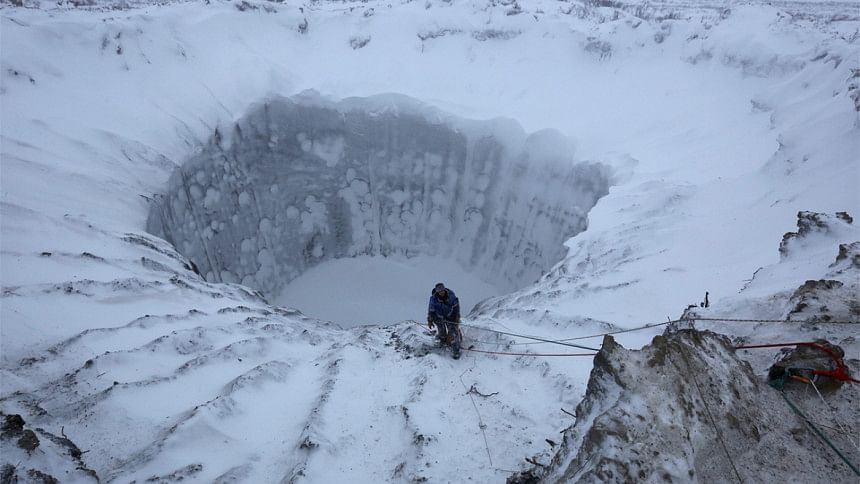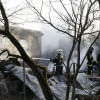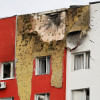Giant holes in Siberia could be signs of ticking climate 'time bomb'

When a helicopter pilot spotted the first crater in summer 2014, everyone was baffled.
The 100-foot-wide hole appeared on the Yamal Peninsula seemingly out of nowhere, during a tense season of Russian military action in Ukraine and international sanctions, reports Business Insider.
And then more appeared. Lacking a better explanation, aliens and underground missiles were floated as possible theories, according to The Washington Post.
But the truth is that the holes might come from a threat not even Mulder and Scully are equipped to handle: climate change.
Scientific American reports that Arctic zones are warming at a breakneck pace, and summer 2014 was warmer than average by an alarming 9 degrees Fahrenheit, according to another story in Nature. As a result, scientists at the National Oceanic and Atmospheric Administration (NOAA) think that permafrost, the permanently frozen ground that covers the tundra, is starting to thaw in these warmer temperatures.
So how does frozen methane blow a 100-foot-wide hole in the ground?
Given low-enough temperatures and high-enough pressure, methane and water can freeze together into what's called a "methane hydrate." Permafrost keeps everything bottled up, but when it thaws, so does the hydrate. Methane is released as a gas, building up pressure — until the ground explodes.
Scientists gained more evidence for this theory after an expedition to the bottom of the crater. It revealed that the air had an extraordinarily high concentration of methane, Business Insider reported.
It's not just explosions and melting permafrost that we should worry about, either. The US Environmental Protection Agency (EPA) states that methane is a greenhouse gas that could have 25 times the impact of carbon dioxide over the next century.
A significant addition to methane emissions would likely have a disastrous impact on our already-troubling atmospheric warming, since it's 21 times better at trapping heat, according to Live Science.
Several outlets have even gone so far as to call this problem a "time bomb."
And it gets worse: One of the craters is just 6 miles from a natural-gas field. The Siberian Times reported that the combination of the two flammable materials in such close proximity is a huge safety concern for the area. At least two of the craters have since turned into lakes.
There may be an alternate explanation, though. Land can collapse without a burst of methane in something called a pingo, which forms when ice is trapped between layers of earth and distorts the top layer into a sort of mound. Thawing can make those mounds suddenly collapse.
Even if the craters are the result of collapsing pingos, they're still likely the result of climate change and still dangerous.
What's more, Slate reports, the same thing could happen in Alaska.
Whether pingo or exploding crater, it's clear that climate change is affecting the Arctic more rapidly than any other place on earth, but researchers are only beginning to grasp how unprecedented warming will effect northern ecosystems.
During his visit to Alaska in September 2015, US President Barack Obama echoed the common sentiment that the Arctic is "ground zero" for climate change.
These mysterious Siberian craters seem to be yet another warning sign that human-caused climate change is quickly spinning out of control, causing new and unpredictable changes along the way.

 For all latest news, follow The Daily Star's Google News channel.
For all latest news, follow The Daily Star's Google News channel. 








Comments